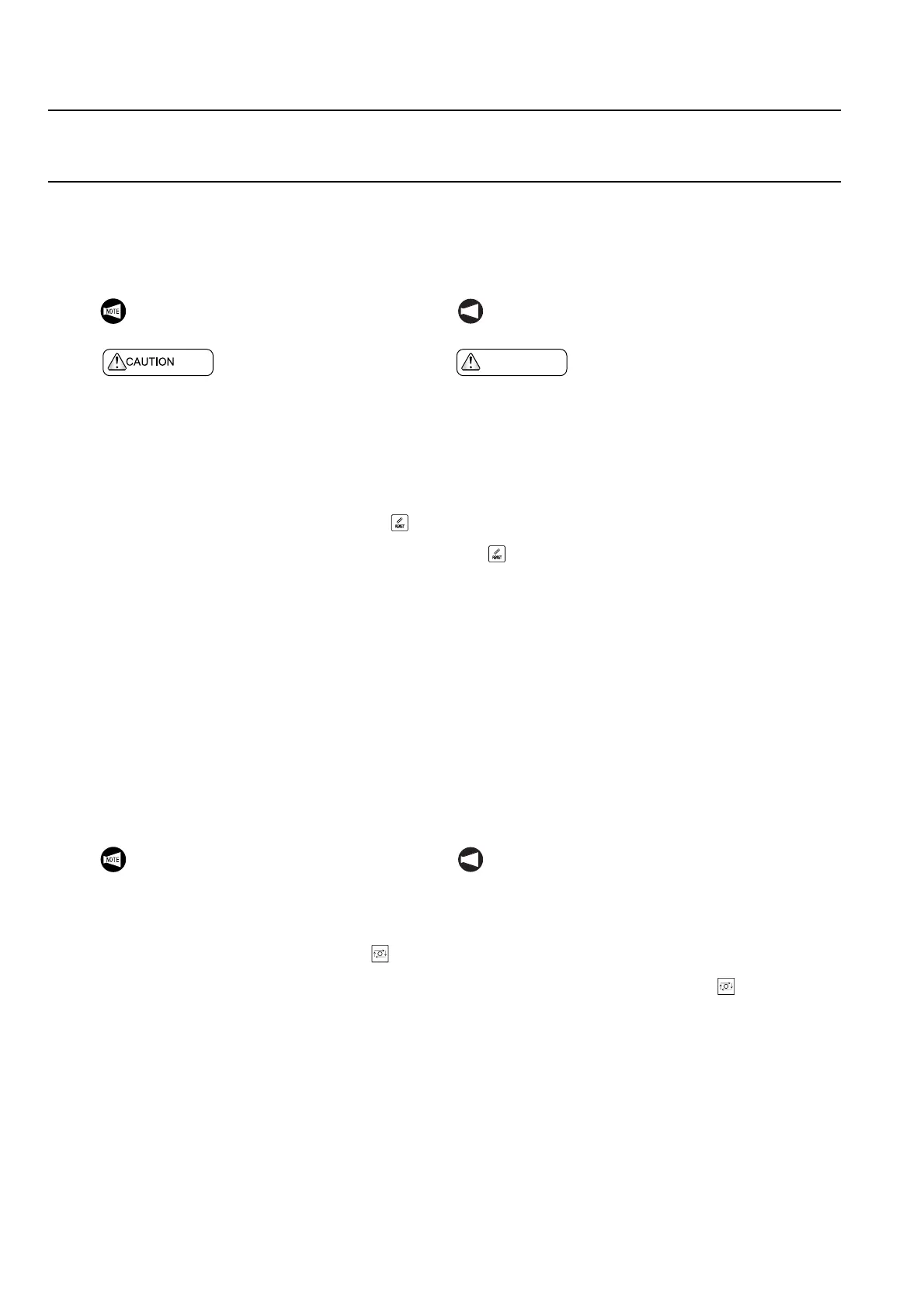2-410 MACHINE OPERATIONS OPERACIONES DE MECANIZADO
19-4 Tapping Cycle
Ciclo de roscado
The G84 face tapping cycle is used for machining
thread using a tap.
When a cutting tool rotating in the normal direction
reaches the specified bottom position, the cutting
tool rotating direction is reversed automatically to
return to the specified level.
El ciclo de roscado de superficie G84 se utiliza para el meca-
nizado de los filetes con un roscador.
Cuando una herramienta de corte que gire en la dirección nor-
mal llegue a la posición especificada en el fondo, la dirección
de rotación de la herramienta de corte se invierte automática-
mente para regresar al nivel especificado.
To use this side tapping cycle, a tapper is used.
NOT A
Para utilizar este ciclo de roscado de superficie lateral,
se utiliza un dispositivo de roscado.
PRECAUCION
1. For the tapping cycle, a tapper is used. In this
case, the return movement from the bottom of
the machined hole to point R level is made
with the tapper extended. Therefore, the
point R level must be specified at a value
larger than the tapper extending length.
[Workpiece and cutting tool collision, or inter-
ference]
2. When the [Emergency Stop] button or
(RESET) key has been pressed to stop the
machine during a tapping operation, carefully
move the axes after checking the workpiece
and cutting tool carefully for damage.
[Workpiece and cutting tool collision, or inter-
ference]
3. Depending on the length of the tapper, dam-
age to the tool may occur as the Z-axis waits
for the rotary tool spindle "one revolution"
signal when at the bottom of the hole. In this
case, setting parameter No. 1270.6 to "1"
enables the Z-axis to return movement with-
out waiting for the "one revolution" signal.
However, extra care is required when specify-
ing G32 continuously for threading opera-
tions. A synchronized tapping cycle is
recommended for tapping at the spindle cen-
ter.
1. Para el ciclo de roscado se utiliza un macho de ros-
car. En este caso, el movimiento de retorno desde el
fondo del orificio mecanizado al nivel del punto R se
hace con el macho de roscar extendido. Por lo
tanto, el nivel del punto R se debe especificar a un
valor más grande que la longitud de extensión del
macho de roscar.
[Colisión o interferencia entre la pieza y la herra-
mienta de corte]
2. Cuando el botón [Parada de emergencia] o la tecla
(RESET) se han oprimido para detener la
máquina durante una operación de roscado, mueva
con cuidado los ejes después de revisar la pieza y la
herramienta de corte detenidamente en busca de
daños.
[Colisión o interferencia entre la pieza y la herra-
mienta de corte]
3. Dependiendo de la longitud del macho de roscar,
puede ocurrir un daño a la herramienta pues el eje Z
espera la señal "una revolución" del husillo con
herramienta giratoria cuando está en el fondo del
orificio. En este caso, la configuración a 1 del pará-
metro Núm. 1270.6 permite que el eje Z regrese sin
tener que esperar la señal "una revolución". Sin
embargo, se requiere cuidado adicional cuando se
especifica G32 continuamente para las operaciones
de roscado. Se recomienda un ciclo de roscado sin-
cronizado para un roscado en el centro del husillo.
1. During the tapping cycle, feedrate override
and rotary tool spindle speed override are
fixed to 100% because a fixed lead thread
cannot be cut if feedrate or rotary tool
spindle speed is changed during tapping
cycle.
2. If the automatic operation button [Feed
Hold] on the operation panel is pressed
during the tapping cycle, the tapping cycle
does not stop until the Z-axis return to the
initial point is completed.
NOT A
1. Durante el ciclo de roscado, la corrección tanto
del avance como de la velocidad del husillo de
herramienta giratoria se fijan al 100%, puesto que
no puede un filete de paso helicoidal fijo si se
altera la velocidad de avance o la velocidad del
husillo de herramienta giratoria durante el ciclo de
roscado.
2. Si se pulsa durante el ciclo de roscado el botón
de funcionamiento automático [Avance dete-
nido], situado en el panel de mando, el funciona-
miento de dicho ciclo no se detiene hasta
completarse el regreso del eje Z al nivel del punto
inicial.

